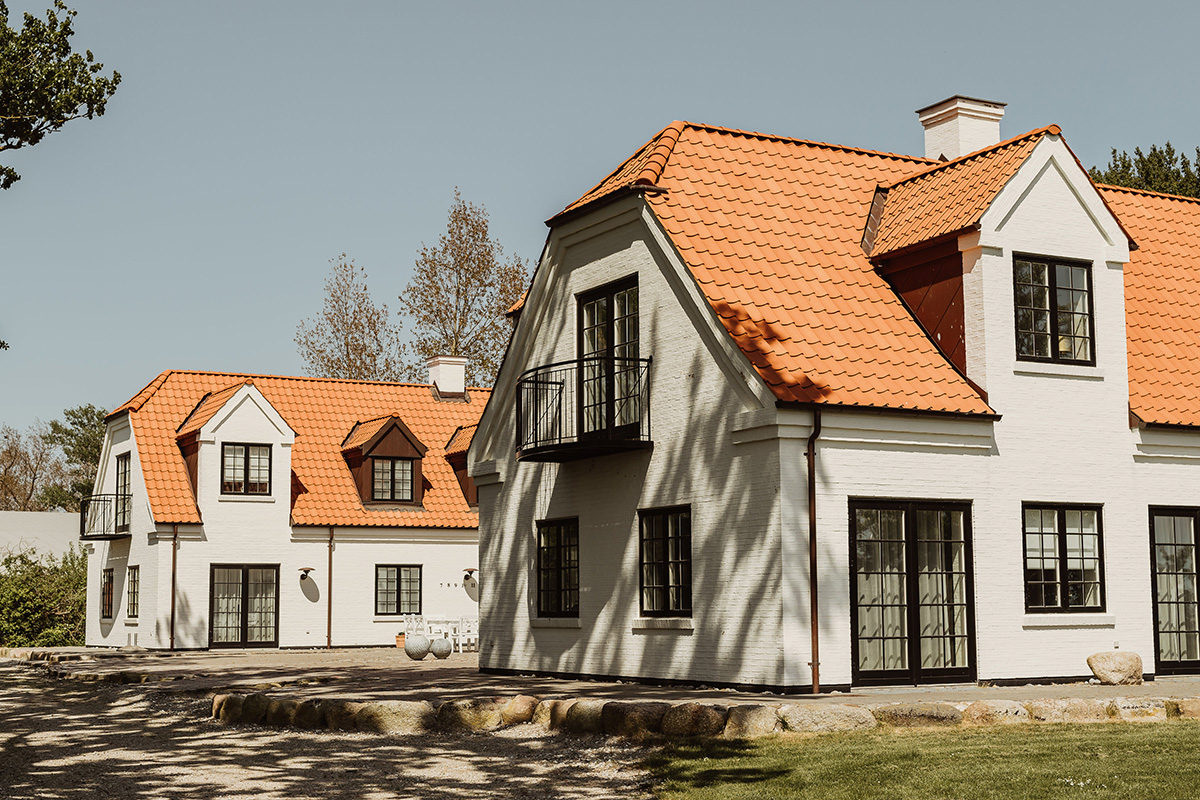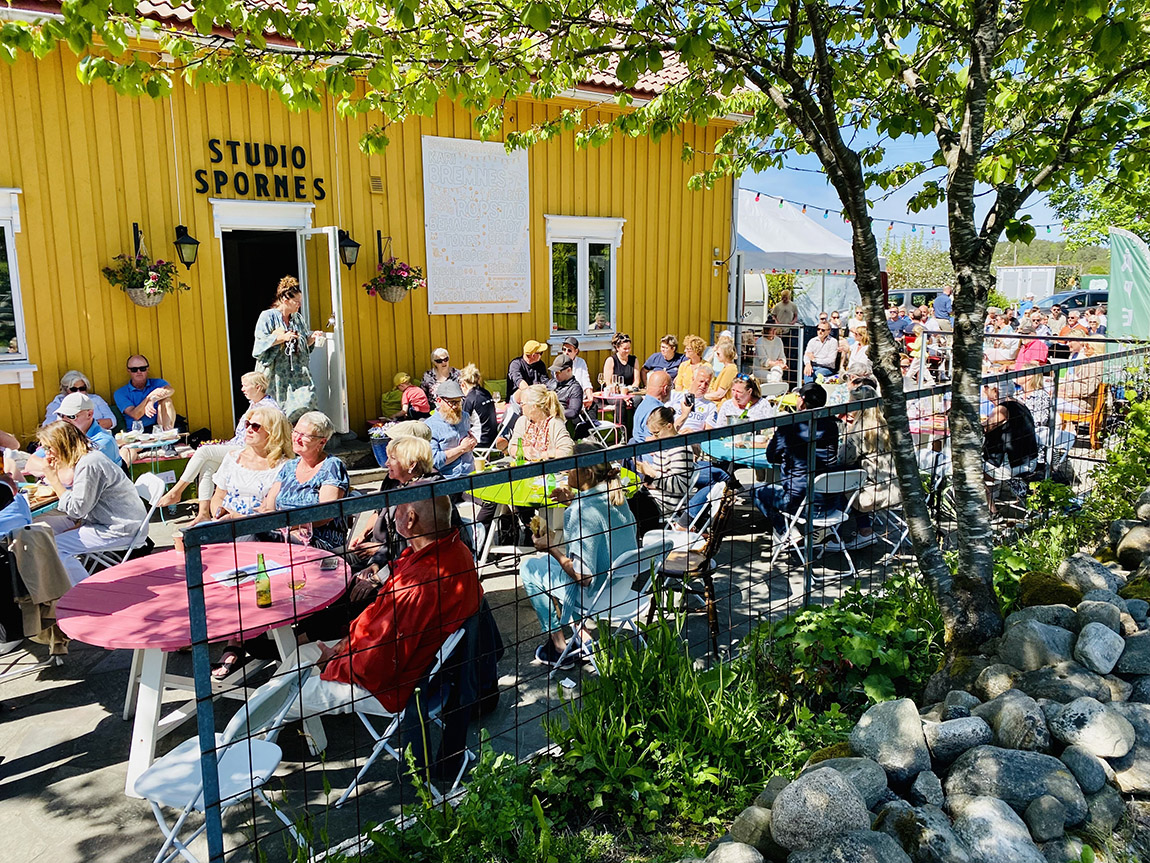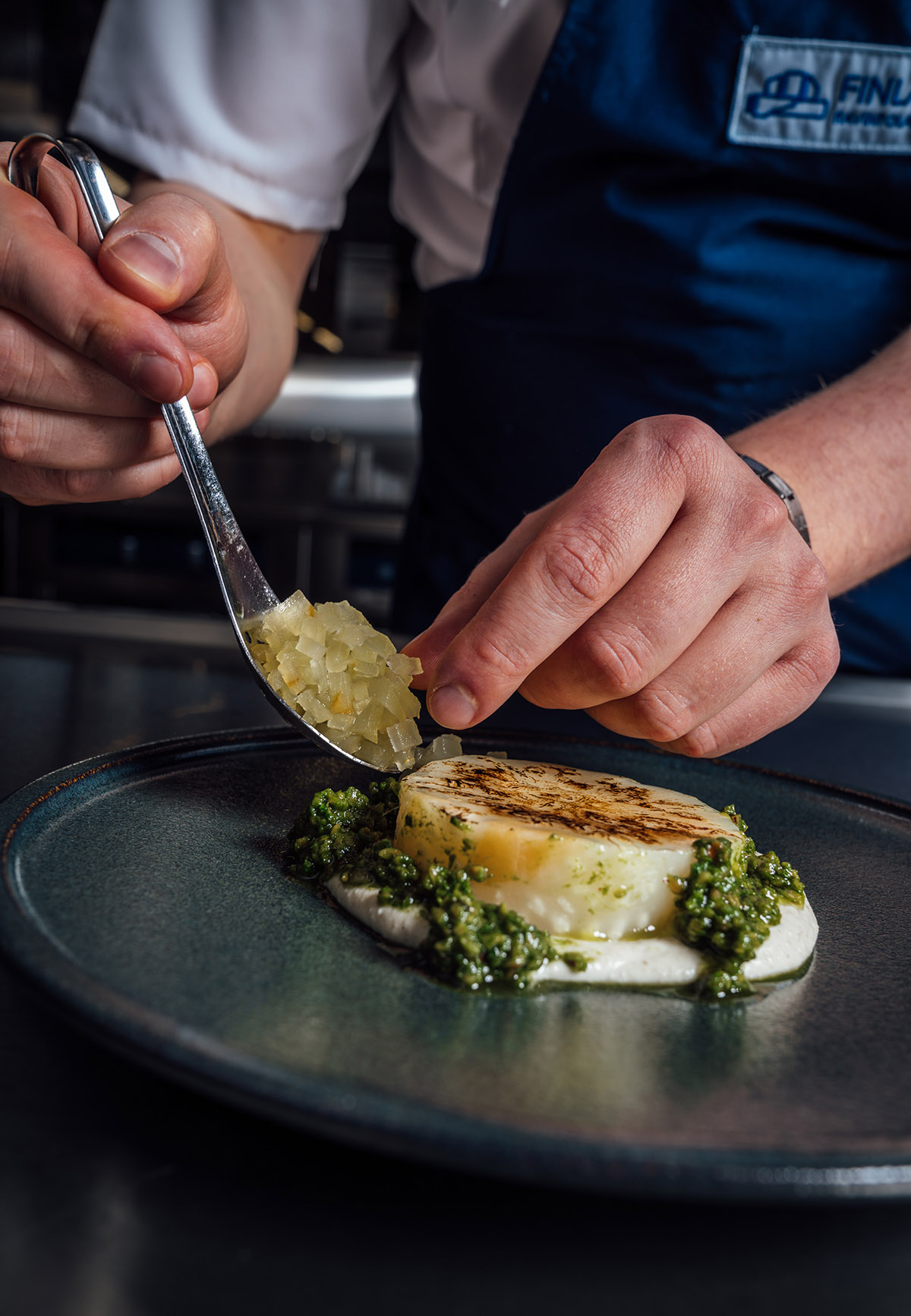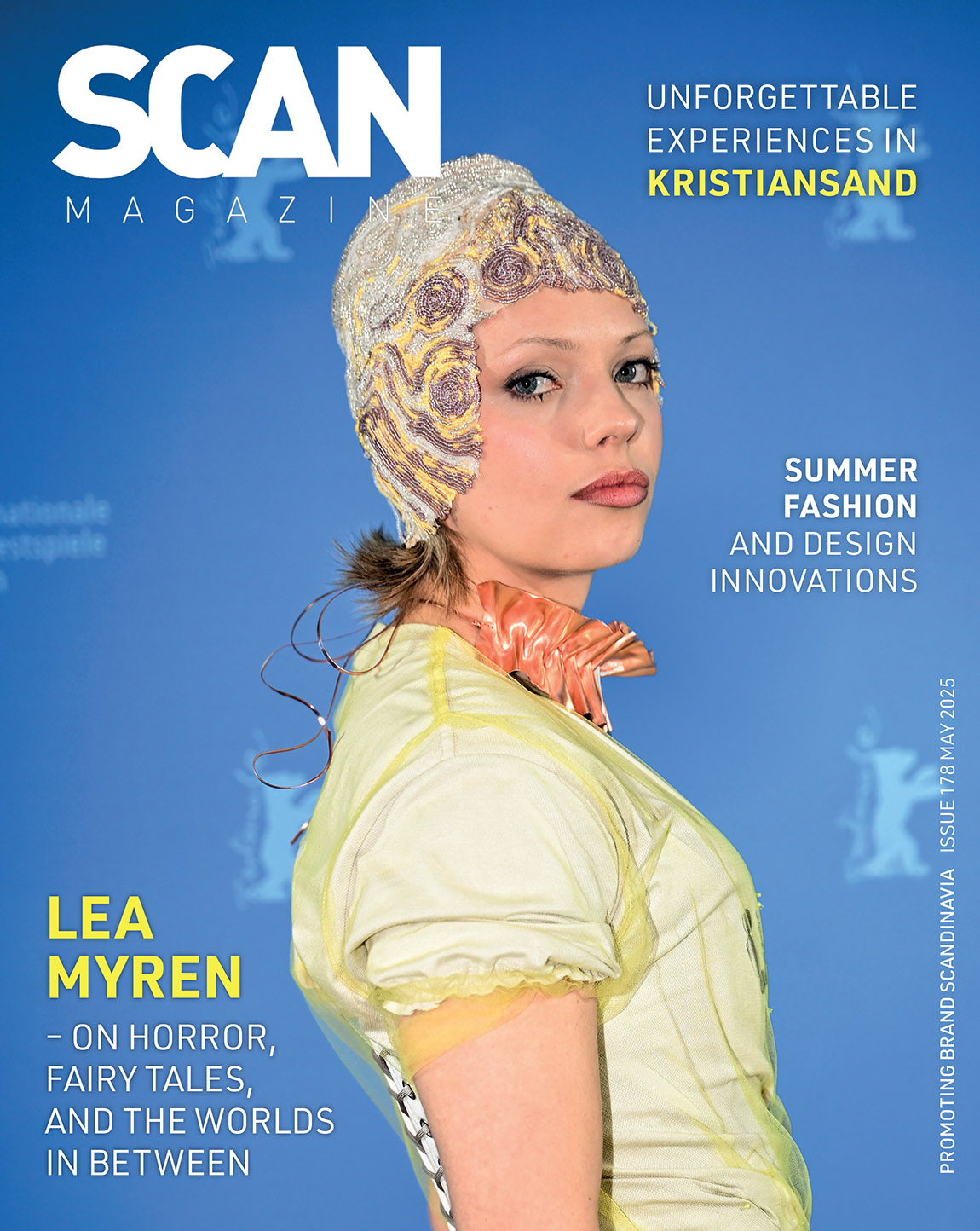Denmark’s beloved smørrebrød gets a sustainable makeover
By Teja Lele
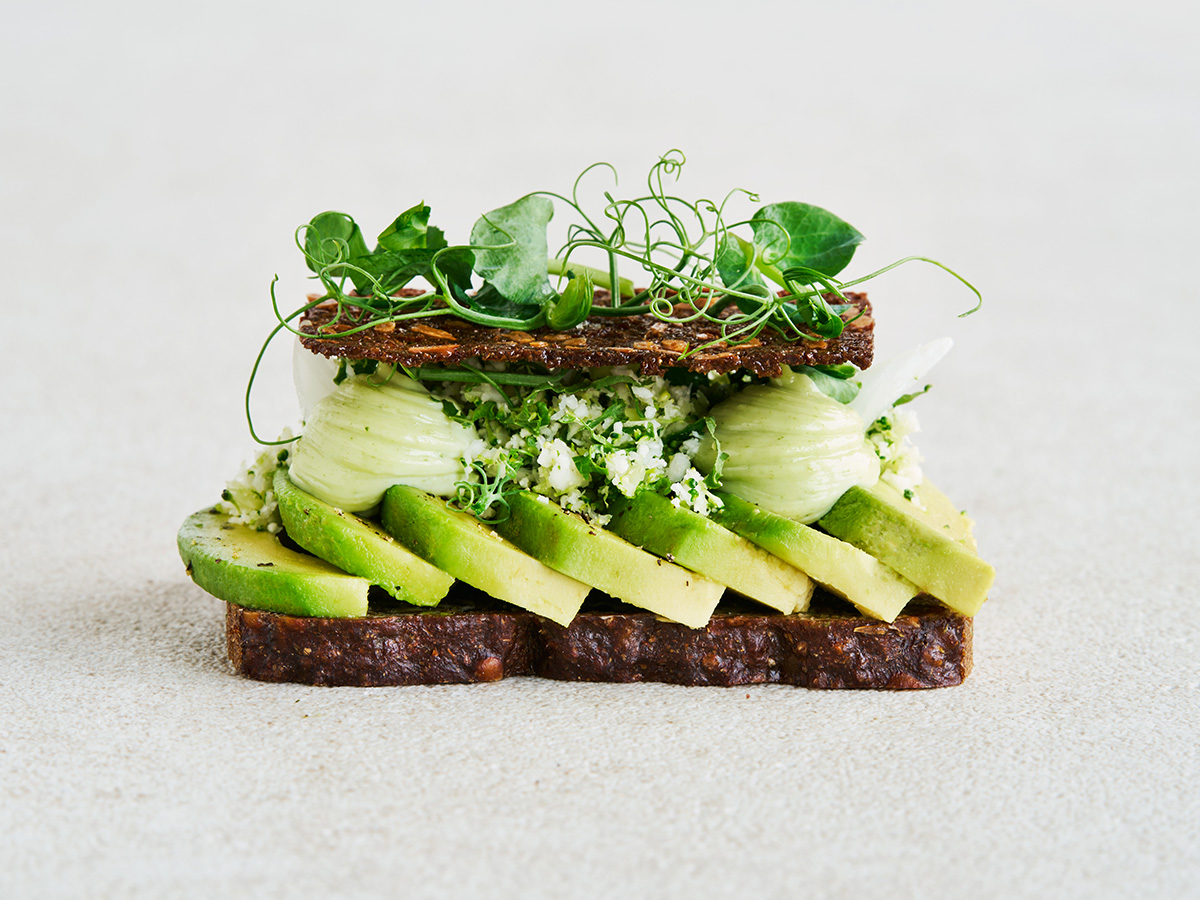
The traditional potato smørrebrød is inherently sustainable, vegetarian and made from leftovers. Photo: Aamanns
Smørrebrød, the classic open-faced rye sandwich stacked with savoury toppings, remains Denmark’s most popular lunch dish. However, with the Danes looking to cut food waste and make their meals more sustainable, smørrebrød is becoming greener and more eco-friendly.
Lunch in Denmark is synonymous with smørrebrød, an open-faced sandwich piled high with toppings. The Scandinavian country’s unofficial national dish can be as simple as a slice of buttered bread. But the bread, dense and sour Danish rye, is typically a sturdy, flavourful base for layers of fixings, including marinated herring, pickles, matured cheese, and aromatic herbs.

Photo: Aamanns
Historians trace the first mention of the word smørrebrød to the turn of the 18th century. The dish harks back to Denmark’s agrarian past when farmers (or their wives) would pack rye bread and leftovers from the previous night’s dinner for lunch. By the late 19th century, squares of buttered dense rye topped with meat, fish or eggs, paired with Danish beer or aquavit, were available in many Copenhagen restaurants.

Photo: Aamanns
In 1888, Oskar Davidsen opened a wine bar in Copenhagen. His wife, Petra, began serving smørrebrød to hungry customers, and their establishment soon offered no less than 177 varieties. All the toppings were layered on the nutritious, filling, and tasty rugbrød, which the Danes have eaten for more than 1,000 years.
“The Danes love rugbrød. Rye grows best in our soil, and the whole grain provides the calories we need for the weather,” says Guxi Maria Abel, on a food tour of Torvehallerne, one of Copenhagen’s most popular food markets.
Smørrebrød was the lunch of the working class during the industrial revolution, and was appropriated by the upper class with lavish toppings, says Abel, adding that the working class would typically top rye bread with pork liver pâté and pickled beetroot, fat balls with salt, or ham and mustard.

Photo: Aamanns
Plant-based options
The Danes still love their meat. Nearly six million follow an animal-based diet, with an average Dane consuming nearly three times the recommended amount of red meat.
The Danish government is, however, nudging its citizens to eat more plant-based food. It has allocated almost €100 million to ensure Denmark’s leading position in the production and development of plant-based foods, eventually improving overall health and fighting climate change.

Photo: Aamanns
Smørrebrød, the go-to Danish lunch, saw a decline in its popularity in the 1980s and 1990s, but has seen a resurgence in recent times. The green shift is also seen in the open-faced sandwich, with many restaurants offering vegetarian options and a cauliflower-based mayo.

Photo: Aamanns
Adam Aamann, the chef credited with bringing the sandwich back to the table with his upscale eateries, agrees that smorrebrod is going more and more green. “The sandwich is traditionally made with meat or fish, but there are many more vegetarian options now,” he says.
Aamann feels that people would not have gone for the vegetarian options ten years ago. But tastes and choices are changing across Denmark. “A lot of plant-based meals are available in cities, which gives us the chance to be creative,” he says.

Photo: Aamanns
Getting creative
Aamann uses pickled, green, and marinated vegetables, and innovates with the toppings. “Options include potato with pickled red onions, the beetroot tartare, which combines three different beets with brown butter emulsion, and half-fried cauliflower with truffle mayo,” he says.
Food historian Nina Bauer agrees that while Denmark’s food culture is centred on meat, there is now a strong focus on eating sustainably. “It’s more a question of more vegetables joining the meat on the plate or people eating vegetarian more days per week,” she says.
She adds that there have always been some vegetarian types of smørrebrød, most famously with potato or tomato.
“Smørrebrød with potatoes, onions, chives, and mayo is a classic. But a lot of other plant-based or vegetable-forward alternatives are available now,” she says.

Photo: Aamanns
Sustainable ideas
In modern times, with the Danes looking to cut food waste and make their meals more sustainable, smørrebrød has also become an eco-friendly lunch option.
Ida Davidsen, great-granddaughter of Oscar Davidson and ambassador of smørrebrød, famously said the dish functions as a vehicle for leftovers, “the way pasta sometimes does for the Italians and crepes sometimes do for the French.” Her century-old restaurant now offers a menu with more than 280 varieties of open-faced sandwiches.
Bauer says a lot of the classical smørrebrød served in restaurants in the late 19th century were cold versions of popular dinner dishes served on rye bread. “Homemade smørrebrød that people made for their lunch boxes were based on leftovers and cold cuts. It’s part of the DNA of smørrebrød that you take inspiration from hot dishes and leftovers,” she says.

Photo: Aamanns
A work of art
The Danish food philosophy is rooted in a respect for nature and an appreciation for fresh, local produce, with a popular saying stating that “what grows together, goes together.” The farm-to-table movement, now synonymous with Danish cooking, is visible in the modern smørrebrød, which uses fresh ingredients that are in season and complement each other.
Aamann believes that smørrebrød, earlier focused on quantity, is now about quality, with chefs using the rye bread to find and showcase their style. He chooses to let his sandwiches and flavours take their cue from the season.
“In Denmark, our long winter season makes us tired of root vegetables. In spring and summer, we look for new vegetables, flavoursome herbs, and fresher tastes,” he says.
Smørrebrød, a complex, layered pyramid of toppings, textures, and tastes, is more than an open sandwich. It comprises four elements: bread, fat, toppings, and garnishes. But in a country known for understatement and simplicity, chefs believe that when done right, the topping should be in complete harmony with the other three elements, not compete for attention.
R. W. Apple, Jr. said it all: “Leave it to the Danes, those past masters of form and colour, to turn sandwiches into still life.”

Photo: Wonderful Copenhagen
Subscribe to Our Newsletter
Receive our monthly newsletter by email

